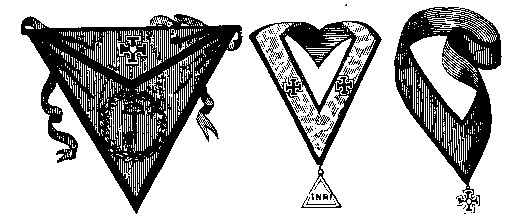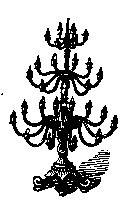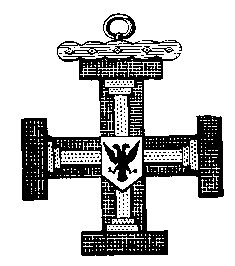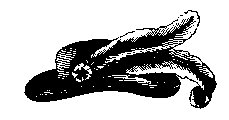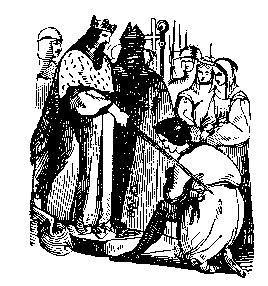The Web of Hiram |
Degrees of the Ancient and Accepted Scottish Rite14. Grand Elect, Perfect and Sublime Master Mason 15. Knight of the East or Sword 17. Knights of the East and West 18. Knight of the Rose-Croix de Heredom 20. Grand Master of all Symbolic Lodges 21. Noachite or Prussian Knight 25. Knight of the Brazen Serpent 29. Knight of St Andrew, or Patriarch of the Crusades |
KNIGHT COMMANDER OF THE TEMPLEThe Twenty-Seventh Grade of the Ancient and Accepted Scottish Rite and the Ninth Degree of the Historical and Philosophical Series
ARGUMENTThe degree of Knight Commander of the Temple is sometimes called Teutonic Knight of the House of St. Mary of Jerusalem. The Order originated at the siege of St. Jean d'Acre, when tents were made for the sick and wounded of the sails of the ships; and while they fought the infidel Saladin by day, and nursed the sick and wounded soldiers by night, the Knights engaged themselves to guard the city of Jerusalem against the Saracens; to protect Christendom; to succour and assist the feeble and oppressed, and to defend the innocent, Their five excellent qualities were Humility, Temperance, Chastity, Generosity, and Honour; and they practised all the Masonic virtues. This is the first strictly chivalric degree of the Ancient and Accepted Scottish rite. LODGES, FURNITURE, ETCBodies of this chivalric degree are styled Chapters. The hangings are scarlet, with black columns at intervals, on each of which is an arm or branch, holding a light. The hangings and columns are so arranged as to make the shape of the Chapter a circle. The canopy and throne are of scarlet, sprinkled with black tears. In front of the East is a candelabrum, with three circles of lights, one above the other. In the lowest circle are twelve lights; in the middle one nine; and in the upper one six.
In the centre of the room is a very large round table, on which are five lamps, with globular shades of ground glass, arranged in the shape of a passion-cross, the vertical shaft extending East and West, the head of the cross to the East. These lamps must be fed with olive oil. On this table is a crucifix, a copy of the Pentateuch in Hebrew, a crown or garland of laurel, a sword and large key, crossed, an apron and pair of gloves of the degree; and scattered upon it, in no particular order, all the working tools of the Symbolic Lodge. Around this table all the Commanders sit. In the West are the following sentences: "IN MANY WORDS THOU SHALT NOT AVOID S1N." "LIFE AND DEATH ARE DISPENSED BY THE TONGUE" OFFICERS AND TITLESThe Sovereign Grand Commander of the Supreme Council of the 33d degree is the Grand Master of the Order. The Commander-in-Chief of the Consistory in which the Chapter is held is the Provincial Grand Master. The presiding officer of a Chapter is styled "Commander in Chief," with the title of "Eminent.". The Senior Warden is styled "Marshal;" and the Junior Warden, "Turcopilier;" the Orator, "Hospitaller;" the Master of Ceremonies, "Draper;" the Secretary, "Chancellor;" the Treasurer, "Seneschal;" the Expert and Assistant Expert, "First," and "Second Lieutenant;" and a "Captain of the Guard." In addressing each, the words "Brother Knight" are prefixed to his official title. The Tiler is styled "Sentinel." There is also a "Chaplain." The Eminent Commander sits on the east side of the table; the Marshal and Turcopilier on the West side, the latter on the right of the former; the Hospitaller on the south side; the Draper on the north; the Secretary on the left of the Eminent Commander, half way between him and the Hospitaller; and the Treasurer on the right of the Eminent Commander, half way between him and the Draper; the First Lieutenant on the right of the Hospitaller; the Second Lieutenant on the left of the Draper; and the Captain of the Guard on the right of the Junior Warden. The Chaplain sits on the right of the Eminent Commander. DRESS, DECORATIONS, ETCThe apron. is of scarlet-colored lambskin, lined and edged with black. The flap is white, and on it is a Teutonic Cross (described as a cross potent sable, charged with another cross double potent or, surcharged with an escutcheon of the Empire, the principal cross surmounted by a chief azure, semee of France). Thus:
In the middle of the apron is a key, in black, and round it, embroidered in green of the proper shade, a garland or wreath of laurel. The gloves are white, lined, edged, and embroidered with red. The order is of white watered ribbon, edged with red, worn as a collar (en camail), at the bottom of which the jewel hangs. On each side of the collar, is embroidered in black and gold the Teutonic Cross. A sash is worn across the body, from right to left, being a broad watered scarlet ribbon, edged with black, at the end of which hangs a gold cross of the Order. The jewel is a triangle of gold, on which is enameled the word INRI. The hilt of the sword is in the shape of a cross, and gilt. The scabbard and sword-belt are black. Under these decorations, each wears a tunic of white woollen stuff, reaching to the mid-thigh; and over all a Knight's mantle of scarlet velvet, reaching nearly to the ground, lined with white silk. On the breast of the tunic is embroidered a Teutonic Cross, as above described; and on the right side of the mantle a passion-cross, in black. The hat is broad-brimmed, with red plumes, and a black and white cockade.
A gilt spur is worn on each heel. Battery - **** - *** - ** RECEPTIONThe following dirge is sung in the adjoining apartment. DIRGEO mason, who dost sleep away, Life's brief, uncertain, stormy day; We all must die, we all must die, And death is ever drawing nigh. The Brother Terrible on high with sonorous voice to all will cry, "We all must die! We all must die" Judgment is ever drawing nigh. Assemble, Masons, one and all! Rise in the body at my call!" We all must die! We all must die! And heaven, we trust, is drawing nigh Those who formerly entered this Order consecrated themselves to the service of the sick and suffering, were constantly employed in works of mercy, and devoted themselves to the service and defence of the Christian faith. They were no longer allowed to act for themselves; but on the contrary were obliged absolutely to renounce their own will and pleasure, and implicitly to comply with that of their superiors. The change of circumstances and manners make this strictness to be no longer required; but you will contract with us an analogous engagement. E.: C.:. By my authority and power as Commander-in-chief of this Chapter, and in the name of the Grand Master of the Order, I hereby constitute, create, and dub thee a Knight Commander of the Temple. Be true, devout, and brave! Arise, A. B., no longer a serving brother, but a Knight; and may glory and good fortune attend you.
Receive now the five trophies of this degree. I crown you with this garland of laurel. This especially is meant to crown your good works, done to the Order, the Lodges, and your brethren; and to encourage you to persevere. I present you with the apron and gloves, the collar, sash, and jewel of the Order. The colours of these decorations are white, red, and black. For whom this latter colour, the emblem of sorrow and mourning, is worn, you will know at a proper time. I present you with the sword of a Knight, to enable you to maintain the rights of Masonry and of men, and to punish their enemies and tyrants. If in that contest you should fall, you will have fulfilled the noblest destiny of a Knight and gentleman. I present you with the spurs of a Knight. As you have worn them worthily, so may you wear them with honour. God forbid that for any act of base unworthiness you should ever be deprived of them. I present you with the pallium or mantle of the Order. This cross is the sign of the Order, which we command you constantly to wear. Take this sign in the name of God, for the increase of faith, the defence of the Order, and the service of the poor. We place this cross upon your breast, my brother, that you may love it with all your heart; and may your right hand ever fight in its defence and for its preservation, as the symbol of knightly Masonry. HISTORYWhen St. Jean d'Acre, the ancient Ptolemais, on the southern side of which was Mount Carmel, was besieged by the Christian forces, for nearly two years, under Guy of Lusignan, King of Jerusalem, Conrad, Marquis of Montferrat, and other princes and leaders from every country in Europe, - and especially by Henry VI. of Germany, son of Frederich Barbarossa, joined, near the end of the siege, by Philip Augustus of France and Richard Coeur de Lion of England, - they were long afflicted with famine, until they ate the flesh of horses with joy, and even the intestines sold for ten sous; men of high rank, and the sons of great men, greedily devoured grass; the starving fought together like dogs for the little bread baked at the ovens; they gnawed the bones that had already been gnawed by the dogs; and noblemen, ashamed to beg, were known to steal bread. Sickness, also, caused by the rains and the intense heat, decimated the Christian forces. The wounded German soldiers, whom none of the others understood, could not make known their sickness nor their necessities. Certain German nobles from the cities of Bremen and Lubee, who had arrived at Acre by sea, moved by the miseries of their countrymen, took the sails of their ships, and made them a large tent, in which for a time they placed the wounded Germans, and tended them with great kindness. Forty nobles of the same nation united with them, and established a kind of hospital in the midst of the camp; and this noble and charitable association, like the Knights of the Temple and of St. John of Jerusalem, soon and insensibly became a new Hospitaller and Military Order. This was in the year 1191. In 1192, Pope Celestin III., at the request of the Emperor Henry VI., solemnly approved of the Order, by his bull of the 23d of February. He prescribed, as regulations for the new Knights, those of St. Augustine; and for special statutes, in all that regarded the poor and the sick, those of the Hospitallers of St. John; in regard to military discipline the regulations of the Templars. This Order, exclusively composed of Germans, was styled " The Order of Teutonic Knights of the House ol St. Mary of Jerusalem ;" as the Templars were styled, "of the House of the Temple at Jerusalem." A great number of noblemen, who had followed that Prince (Frederic of Suabia, second son of the Emperor) to Acre as volunteers, some actuated by religious enthusiasm, and some by the desire of glory, joined the soldiers of the Temple and of the Hospital, or engaged in attending on the wounded and caring for the sick of their nation. This was the origin of the Teutonic Order, the first branch of that of the Templars. The chiefs, desiring to advance these pious gentlemen and to gratify the German nation, proposed to them the institution of a new Order of Chivalry, to be at once hospitaller and military. Forty German lords, distinguished by their nobility; and feats of arms, agreed to these, and became the Founders and original members of the Order. On entering the Order, they bound themselves by the three solemn vows, and also obliged themselves to serve the poor, in imitation of the Hospitallers, and to follow the claustral and military discipline of the Templars, in peace as well as in war. Their title of Knights of the House of St. Mary of Jerusalem was given them, because while, the city of Jerusalem was under the government of the Latin Christians, a German had erected there, at his own expense, a hospital and oratory for the sick of his nation, under the protection of, and dedicated to, the Virgin Mary. To distinguish this Order from the other two, they adopted the black cross. It is ordinarily said that they also adopted the white mantle; but about the year 1210, the Templars of Palestine complained to Pope Innocent, that after they had received from the Holy See the white mantle as the distinctive dress of their Order, the Teutonic Knights, and especially those of St. Jean d'Acre, had assumed to wear it. Innocent wrote to the latter, and to their Grand Master, Herman Bart, a gentleman of Holstein, and directed that, in order to avoid all occasion for jealousy or quarrel, they should content themselves with their ordinary dress, and leave the white colour to the Templars; and at the same time he ordered the Patriarch of Jerusalem to see to it that the Teutonic Knights should follow their first custom, and to censure, and so compel them to do it, if necessary. It is true that they paid little regard to the mandate of the Pope, and soon adopted the white mantle again; but it was not their primitive dress; and therefore we, in this degree, wear a different colour. The leading objects of the three great military orders were the same. The Teutonic Knights soon rivalled the other orders in numbers and influence. In the year 1226, most of the Teutonic Knights went from the Holy Land to Prussia; the people of which were still idolaters, waging cruel war against their Christian neighbors, murdering priests at the foot of the altar, and employing the sacred vessels for profane uses. For many years the Teutonic Knights held Prussia as a fief depending on the crown of Poland. After the Order of the Temple had been "suppressed, extinguished, and abolished," in the year 1312, by the papal bull of the 6th May of that year, by which all persons were forbidden to enter the Order, or to assume the name of Templars, or to wear their dress, under pain of excommunication, an extension of the same, in the same year, adjudged all the Property and estates of the Templars to the Knights of Rhodes (of St. John, or the Hospitallers, afterward Knights of Malta), except such as were in the realms of Spain, and without prejudice to the right of any kings, princes, or lords to any property of the Order in other countries. A Knight Commander of the Temple should have five excellent qualities, which are represented by the five lights that form the symbolic cross upon our table, - Humility, Temperance, Chastity, Generosity, and Honour. |
|
|
||||||||||||
|
|
[ to top ] |
